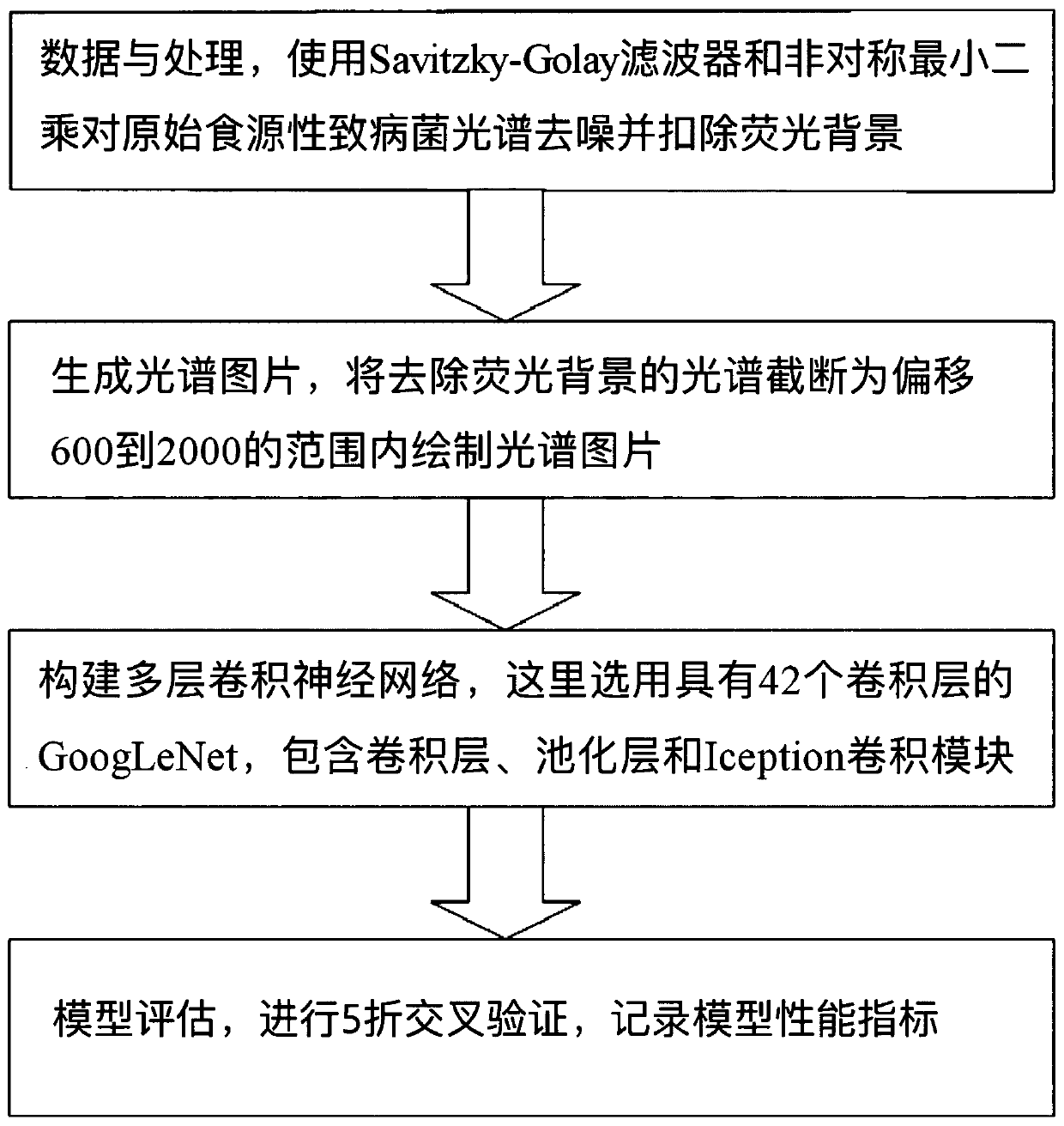Food-borne pathogenic bacterium classification method
A food-borne pathogenic bacteria and classification method technology, applied in the direction of instruments, biological neural network models, calculations, etc., can solve the problems of ineffective operation, cumbersome operation, high cost, etc., and achieve high accuracy and few network parameters , the effect of alleviating the problem of misjudgment
- Summary
- Abstract
- Description
- Claims
- Application Information
AI Technical Summary
Problems solved by technology
Method used
Image
Examples
Embodiment Construction
[0024] The present invention will be described in detail below in conjunction with specific embodiments. The following examples will help those skilled in the art to further understand the present invention, but do not limit the present invention in any form. It should be noted that those skilled in the art can make several changes and improvements without departing from the concept of the present invention. These all belong to the protection scope of the present invention.
[0025] figure 1 For the convolutional neural network classification method adopted in the present invention, such as figure 1 As shown, the method in this embodiment includes:
[0026] S1. Spectral preprocessing: use the Savitzky-Golay filter and asymmetric least squares in the Origin software to analyze the original E. coli O 157 :H 7 , Brucella S2 strain pathogen spectrum pretreatment to remove the fluorescence background, to obtain the spectrum of pathogenic bacteria;
[0027] S2. Generating a ...
PUM
 Login to View More
Login to View More Abstract
Description
Claims
Application Information
 Login to View More
Login to View More - R&D
- Intellectual Property
- Life Sciences
- Materials
- Tech Scout
- Unparalleled Data Quality
- Higher Quality Content
- 60% Fewer Hallucinations
Browse by: Latest US Patents, China's latest patents, Technical Efficacy Thesaurus, Application Domain, Technology Topic, Popular Technical Reports.
© 2025 PatSnap. All rights reserved.Legal|Privacy policy|Modern Slavery Act Transparency Statement|Sitemap|About US| Contact US: help@patsnap.com



